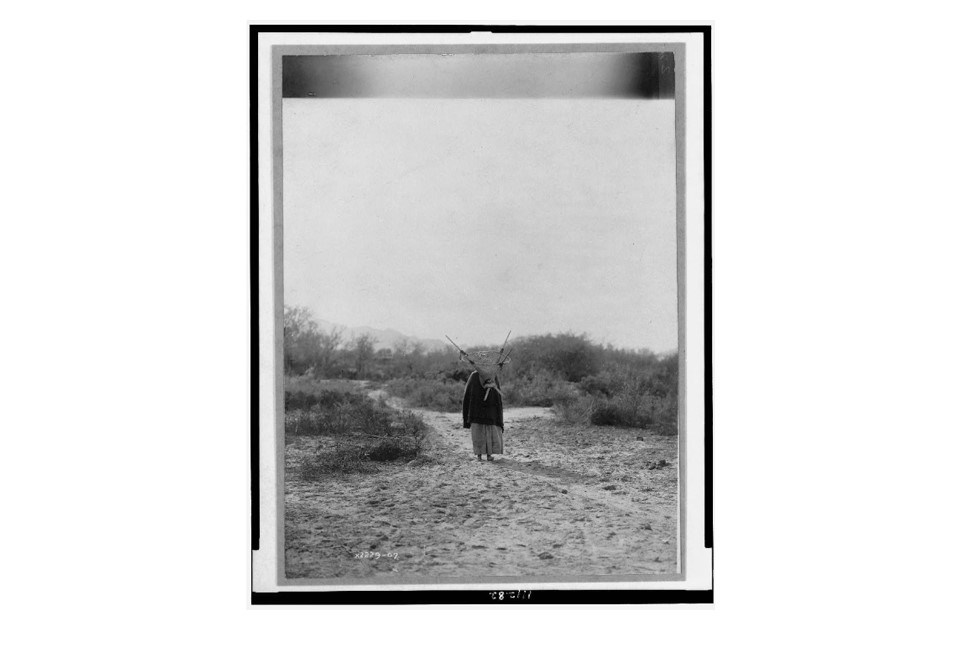Part of a series of articles titled Women of the Pimería Alta.
Article
Women of the Pimería Alta-Cultural Exchange

Credit to the Library of Congress
Women as Cultural Brokers
Indigenous women also played important roles in mission communities by functioning as cultural brokers or mediators. This cultural brokering took place both within households as well as in the broader mission society. Women negotiated the many tensions that occured as colonial and local indigenous societies blended. Often, it was women who mediated social and cultural changes related to traditional values, religion, ethnicity, and race.
Indigenous men tended to assimilate more quickly into Spanish colonial trends. Indigenous women tended to maintain their own native traditions. Sometimes this took place because of Spanish laws. For example, a decree limiting women’s dress was put forth by the Spanish Royal Tribunal in 1582: “No Mestizo, Mulatto, or Black woman shall dress as an Indian woman, but as the Spanish women do, under penalty of arrest and being beaten through the streets with 100 blows and a fine of 4 reales paid to the arresting officer, the foregoing is also applicable to Mestizo, Mulatto, and Black women married to Indians.”
The law was meant to promote Spanish styles of fashion and limit the use of indigneous clothing. Paradoxically, native clothing would soon transform into mainstream Spanish colonial fashion. Missionary Ignaz Pfefferkorn wrote that the “Sóba Júpuris [O’odham] raised cotton which they wove and dyed for clothing and they were dressed and adorned with colored mantas (cotton blankets) belts and strings of beads around the neck.” These mantas were likely the first form of the rebozo that eventually became popular among mestizo and indigenous women. Eventually, the rebozo was adopted into wider Spanish society. The integration of native clothing into mainstream Spanish style exemplifies the role that indigenous women played as intermediaries of culture and custom. It also shows that women played an important part in spreading indigenous traditions to the wider public space and across ethnic lines. Most native women continued to preserve customary clothing styles, including wrap-around skirts held in place with sashes.
Another way that O’odham, Yoeme, and Nde women helped preserve and spread their customs to the broader society was through basketry and carrying nets. For centuries before Spanish contact, O’odham women used local materials like yucca, devil’s claw, willow, and other plants to weave beautiful and useful baskets and efficient carrying nets, sometimes referred to as “burden baskets.” These large carrying nets are called kiaha in O’odham. Kiaha were cone-shaped and held upright with long sticks. Kiaha could be used to carry a wide variety of objects, such as harvested foodstuffs, basketry materials, and firewood. Women’s use of the traditional kiaha continued in the missions.
Women also used the kiaha as vehicles of cultural exchange and sustenance. With burden baskets fastened to their backs or attached to their bodies by a strap across the forehead, women walked from their mission communities to nearby towns and presidios to sell goods produced by their mission or by them specifically.
With their kiaha loaded with surplus beans, grains, or leather hides, women walked for miles to sell their goods to colonial settlers living in Spanish pueblos and presidios. Often, women not only sold goods on behalf of the missions, but also sold their own goods in order to bolster their livelihoods and economic standing. These products included pottery, woven baskets, and other goods.
Marketing traditional products benefitted indigenous women and also spread indigenous craftsmanship throughout society. These economic activities likely became even more widespread after the 1830s. Mexico had recently gained independence from Spain, expelled Spanish-born priests, and withdrew financial support from the missions. This change in governance and mission structure meant that women had to turn to other means of supporting themselves and their families. Women travelled great distances carrying and selling traditional goods, and ultimately these items gained growing status as “curio” items. In this way, women disseminated and popularized traditional goods, and they were able to maintain traditional cultural customs, such as use of the kiaha.
Last updated: March 25, 2021
